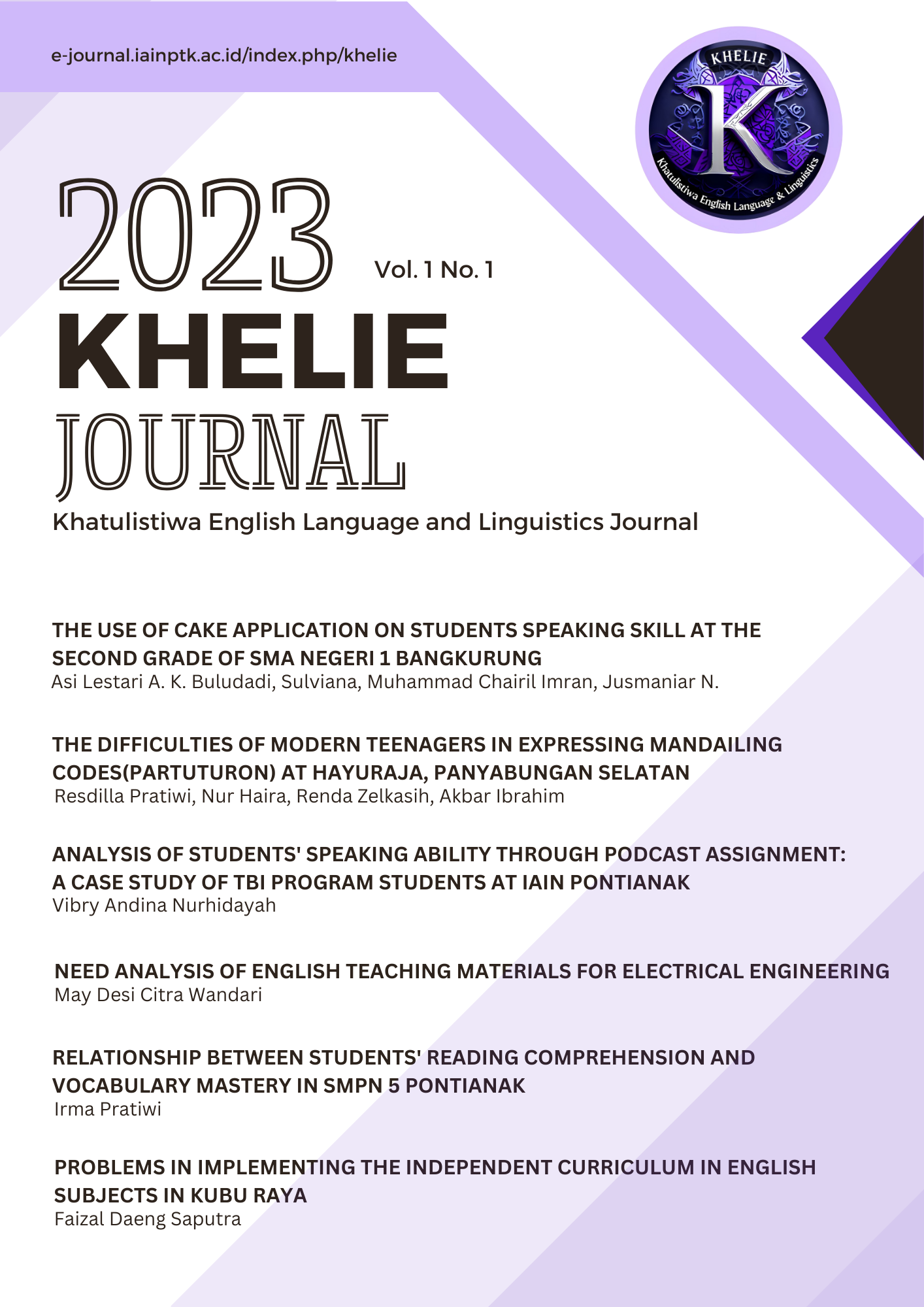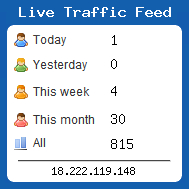The Relationship between Students' Reading Comprehension and Vocabulary Mastery in SMPN 5 Pontianak
DOI:
https://doi.org/10.24260/khelie.v1i1.2205Keywords:
Reading Comprehension, Relationship, Vocabulary.Abstract
English learning to enhance students' ability to communicate, both orally and in writing. Insight on the reading was affected by several factors - vocabulary mastery. Based on pre-research observation at SMPN 5 Pontianak, found that students find it difficult to understand the meaning of the read words that correspond to the reading context, thus preventing students from understanding the meaning in the sentence or paragraph in the reading process. This research aims to find out the relationship between reading comprehension and vocabulary mastery of the second-grade students at SMPN 5 Pontianak. It used a quantitative approach and the kind of this research is a correlation. The sample is 8A, with as many as 32 students. Data collection for vocabulary mastery and reading comprehension is taken with the testing techniques of multiple choice. The reading comprehension test was taken from the students' LKS, while the vocabulary test was adopted by ‘Test Your English Vocabulary in Use’. Testing the research hypothesis using a product correlation technique. Based on the statistical calculation, known that vocabulary and reading comprehension mean is 81.72 and 83.58 in the good category, and the correlation coefficient is 0.681 with sig.5% is 0.361 and degree of freedom is 30. Therefore, the coefficient correlation is greater than the r-table. It can be concluded that alternative hypotheses are accepted. So there is a positive correlation between reading comprehension and vocabulary mastery in second grade at SMPN 5 Pontianak. This suggests that vocabulary mastery variables can better predict reading comprehension.








